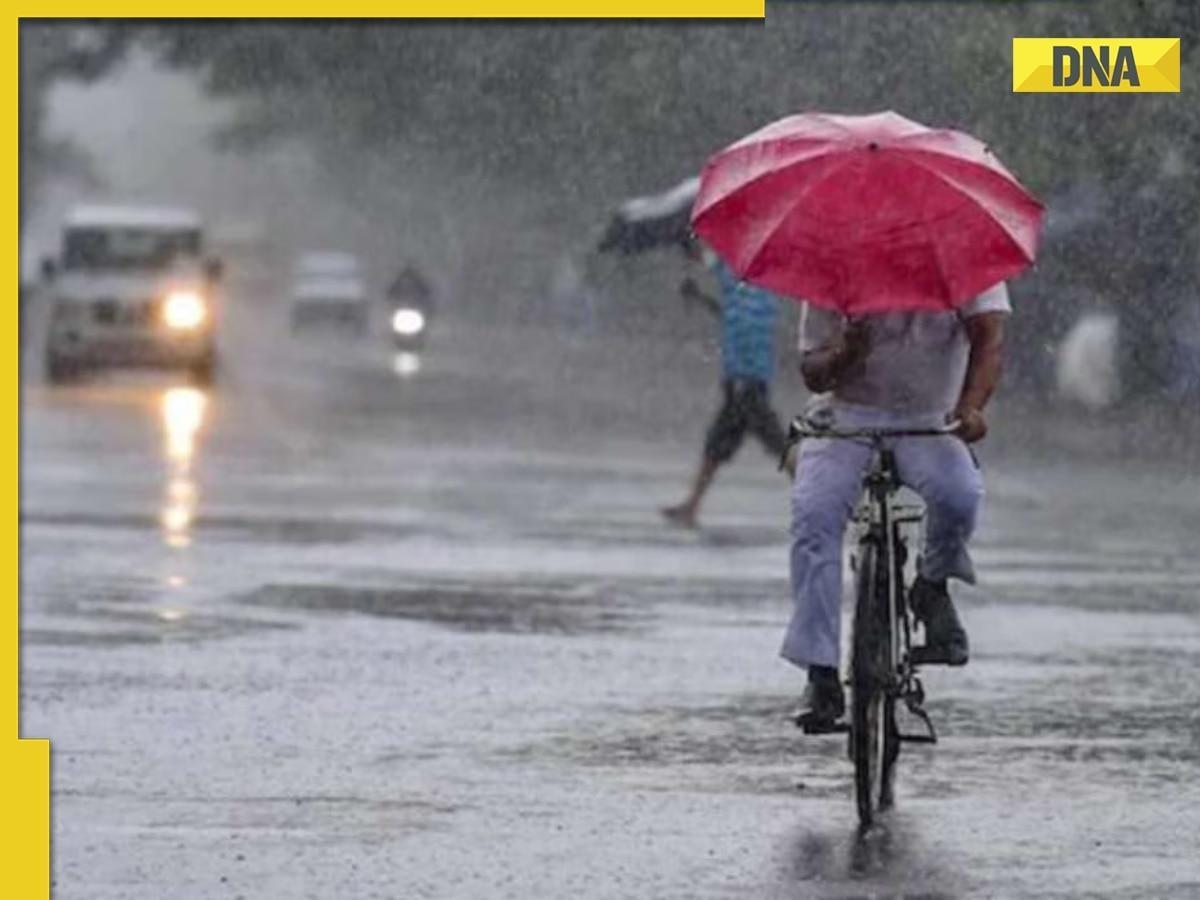
Delhi residents experienced a welcome reprieve from the oppressive heatwave this Sunday, thanks to light rains and overcast skies. According to the India Meteorological Department (IMD), the maximum temperature in the city was recorded at 39.8 degrees Celsius. The meteorological service has forecasted thunderstorms accompanied by rain on June 24 and 25, providing a longer respite for the people of the national capital.
The IMD also speculates that Friday will bring a generally cloudy sky, with thunderstorms and light rains accompanied by gusty winds. As of 5.30 pm, the humidity level stood at 63 percent. Sunday evening saw various parts of Delhi receive light to moderate rain, alleviating the heat spell that had gripped the city.
In addition to the welcome change in weather, the Air Quality Index (AQI) of the national capital improved to the “moderate” category. At 6 pm, the AQI reading, according to the Central Pollution Control Board, was 143. To provide some context, an AQI between zero and 50 is classified as “good”, 51 and 100 as “satisfactory”, while 101 and 200 fall under “moderate”. Moreover, an AQI between 201 and 300 is considered “poor”, 301 and 400 “very poor”, and 401 to 500 “severe”.
The city’s residents enthusiastically welcomed the change in weather. Many took to social media to share their relief and gratitude, posting pictures of rain-drenched streets, overcast skies, and outdoor scenes transformed by the downpour. Local markets and parks saw a surge in activity as people ventured out to enjoy the cooler temperatures.
This change in weather comes after a spell of intense heat that saw temperatures soar above 40 degrees Celsius. The heatwave not only made everyday activities more challenging but also led to increased cases of heatstroke and dehydration. The IMD had previously issued warnings, urging people to stay indoors during peak hours, remain hydrated, and take necessary precautions to avoid heat-related ailments.
.
Healthcare facilities in the city were also on high alert due to the heatwave, with increased patient footfalls reporting heat exhaustion and related illnesses. Authorities had set up public hydration points and temporary shelters to provide immediate relief. The respite on Sunday, therefore, came as a much-needed breather for both the public and healthcare systems.
According to weather experts, this shift in weather patterns is due to the monsoon trough moving towards Delhi. The beginning of the monsoon season typically brings relief from the summer heat but can sometimes be unpredictable in its onset and distribution across the city. Forecasting models indicate that Delhi might experience intermittent rain over the coming weeks, providing much-awaited relief from the sweltering conditions.
However, the rain and thunderstorms come with their own set of challenges. Already, reports have emerged about waterlogging in certain low-lying areas, which could potentially lead to traffic snarls and inconvenience. Authorities have been urged to take preemptive measures to mitigate these issues, such as clearing stormwater drains and deploying necessary personnel to manage traffic during peak hours.
Environmental experts have pointed out that while the showers bring much-needed relief, they don’t solve the city’s ongoing struggle with air pollution. The marginal improvement in AQI is a temporary reprieve, and long-term solutions are essential for ensuring consistent air quality improvements. Measures such as reducing vehicular emissions, cracking down on industrial pollutants, and implementing green cover initiatives are crucial for the city’s overall health and well-being.
This brief period of rain has also raised hopes for improved agricultural conditions in surrounding areas. Farmers in nearby regions who rely on monsoon rains for their crops welcomed the showers, hoping for a bountiful season.
Moving forward, as residents of the capital city enjoy this spell of favorable weather, they remain cautiously optimistic. Both the government and the public are mindful of the need for continued vigilance and preparedness in battling extreme weather conditions. Whether it’s sweltering heat or sudden downpours, the resilience of Delhi’s residents and the efficacy of its administrative measures will be crucial in navigating these challenges.
(With inputs from PTI)
READ | NEET-UG 2024 exam: Nearly 50% of students skipped re-test today, says NTA












